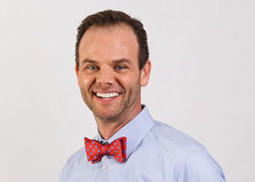In healthcare, dealing with complexity and change is part of the job description. And that was certainly the case when MissionPoint Health Partners embarked on our journey to create an Accountable Care Organization (ACO) five years ago.

With healthcare costs skyrocketing and reimbursements declining even as quality demands were going up, we knew that business as usual wasn’t going to cut it any more. We realized that a population health management model would allow us to coordinate services like chronic disease management, health coaching, home visits and wellness services in a more affordable, accessible and patient-focused way.
But building a population health management organization is complex by design. It involves bringing together a group of doctors, hospitals and other health care providers to collaborate on delivering high-quality care to their patient populations. While that sounds fairly straightforward on the surface, there are many moving pieces and parts. You have to have strong, multi-functional systems and processes in place to make it work as intended.
After all, we would have to be able to:
- Identify, recruit, align and manage previously independent providers across many health disciplines
- Understand the needs of the members (patients) by targeted geographic area so that we could effectively recruit appropriate physicians and specialists
- Find a way to consistently and efficiently communicate with both the providers and the members to help them appreciate the benefits of a well-care approach
- Adhere to complex regulatory and privacy requirements, including having a HIPPAA-compliant platform for securely sharing protected health information (PHI) on any device
- Track, measure and adapt as Medicare Shared Savings Program (MSSP) target benchmarks for shared savings continue to evolve
And that was just for starters. This was an initiative that had the potential to quickly spiral out into a costly, time-consuming and potentially cumbersome process—the exact opposite of what we wanted to achieve with this approach.
We knew that robust healthcare technology solutions would play a pivotal role, but how many systems would it take? How would we collect, track, update and share data consistently across so many diverse groups? And how expensive would that be?
A Seamless Healthcare Technology Infrastructure
With these concerns top of mind, we went into the process with a goal of controlling costs and limiting the number of in-house technology solutions we would have to rely on. Salesforce seemed like the obvious answer—a single source of truth that could become the backbone of our infrastructure. Once we met with the team at Virsys12, we knew it was the right choice for us.
Over a period of 24 months, Virsys12 customized, tested and applied a variety of Salesforce tools, ultimately creating a robust, scalable population health management solution that is now known as V12 Network. We worked closely with them to make sure it addressed all of the complex requirements that are inherent with population health management.
This platform has enabled the streamlined process automation, data integrity and seamless integrations we needed and, combined with additional tools like Data.com, Sales Cloud and MapAnything, has given us valuable data to drive strategic business decisions—decisions that have improved our bottom line. We’ve also been able to deliver exceptional customer service by creating a single view of patient inquiries about care and other issues while tracking response times, resolutions and overall customer satisfaction.
Cost-Effective Growth Requires a Strong Foundation
In the first year of the V12 Network implementation, we tracked 180% growth in member touches and 123% growth in reported member issues or cases resolved, leading to lower re-admittance rates. At the same time, our costs decreased 12%.
Today, MissionPoint successfully manages a population of more than 250,000 members. The original number of physicians and ancillary groups participating increas
ed 157% from day one. Additionally, the use of scalable, repeatable technology and processes, along with the specific functionality provided by the V12 Network platform, have made it possible to expand with minimal incremental technology costs each time we enter a new market.
In fact, we’re now using V12 Network in five new markets, and it’s required only a small fraction—5%—of the initial time and money invested to adapt to each new region’s specific requirements. Along with that, we’ve seen over $49 million dollars in saving to our clients since 2012.
And that’s critical, because healthcare isn’t just complex; it’s also changing by the minute. As the environment continues to go through ongoing volatility and uncertainty, it’s more important than ever to have a reliable, scalable and flexible technology infrastructure in place. No matter what changes come next, that foundation ensures that we’ll be able to keep costs low for our members and employers while improving the overall health and healthcare experience for our members.
Michael Gardner
VP, Business Development
MissionPoint Health Partners
Michael Gardner, MissionPoint’s Vice President of Business Development, is charged with growing MissionPoint’s reach and membership by working with self-insured employers, health systems, payers, government agencies and other partners to create customized solutions that address each population’s unique needs.
Previously, Michael served as Division Director of Business Operations at Baptist Hospital (now Saint Thomas Midtown). His previous experience includes risk contracting, physician network management, and administering pay-for-performance programs.
Michael is a Rule 31 Listed General Civil Mediator, serving as a volunteer mediator for the Nashville Conflict Resolution Center, where he also serves on the Board of Directors. He’s also served on the Board of Examiners for the Tennessee Center for Performance Excellence (TNCPE). Michael lives in East Nashville, and enjoys reading, travel and collecting vinyl records.
In healthcare, dealing with complexity and change is part of the job description. And that was certainly the case when MissionPoint Health Partners embarked on our journey to create an Accountable Care Organization (ACO) five years ago.

With healthcare costs skyrocketing and reimbursements declining even as quality demands were going up, we knew that business as usual wasn’t going to cut it any more. We realized that a population health management model would allow us to coordinate services like chronic disease management, health coaching, home visits and wellness services in a more affordable, accessible and patient-focused way.
But building a population health management organization is complex by design. It involves bringing together a group of doctors, hospitals and other health care providers to collaborate on delivering high-quality care to their patient populations. While that sounds fairly straightforward on the surface, there are many moving pieces and parts. You have to have strong, multi-functional systems and processes in place to make it work as intended.
After all, we would have to be able to:
- Identify, recruit, align and manage previously independent providers across many health disciplines
- Understand the needs of the members (patients) by targeted geographic area so that we could effectively recruit appropriate physicians and specialists
- Find a way to consistently and efficiently communicate with both the providers and the members to help them appreciate the benefits of a well-care approach
- Adhere to complex regulatory and privacy requirements, including having a HIPPAA-compliant platform for securely sharing protected health information (PHI) on any device
- Track, measure and adapt as Medicare Shared Savings Program (MSSP) target benchmarks for shared savings continue to evolve
And that was just for starters. This was an initiative that had the potential to quickly spiral out into a costly, time-consuming and potentially cumbersome process—the exact opposite of what we wanted to achieve with this approach.
We knew that robust healthcare technology solutions would play a pivotal role, but how many systems would it take? How would we collect, track, update and share data consistently across so many diverse groups? And how expensive would that be?
A Seamless Healthcare Technology Infrastructure
With these concerns top of mind, we went into the process with a goal of controlling costs and limiting the number of in-house technology solutions we would have to rely on. Salesforce seemed like the obvious answer—a single source of truth that could become the backbone of our infrastructure. Once we met with the team at Virsys12, we knew it was the right choice for us.
Over a period of 24 months, Virsys12 customized, tested and applied a variety of Salesforce tools, ultimately creating a robust, scalable population health management solution that is now known as V12 Network. We worked closely with them to make sure it addressed all of the complex requirements that are inherent with population health management.
This platform has enabled the streamlined process automation, data integrity and seamless integrations we needed and, combined with additional tools like Data.com, Sales Cloud and MapAnything, has given us valuable data to drive strategic business decisions—decisions that have improved our bottom line. We’ve also been able to deliver exceptional customer service by creating a single view of patient inquiries about care and other issues while tracking response times, resolutions and overall customer satisfaction.
Cost-Effective Growth Requires a Strong Foundation
In the first year of the V12 Network implementation, we tracked 180% growth in member touches and 123% growth in reported member issues or cases resolved, leading to lower re-admittance rates. At the same time, our costs decreased 12%.
Today, MissionPoint successfully manages a population of more than 250,000 members. The original number of physicians and ancillary groups participating increas
ed 157% from day one. Additionally, the use of scalable, repeatable technology and processes, along with the specific functionality provided by the V12 Network platform, have made it possible to expand with minimal incremental technology costs each time we enter a new market.
In fact, we’re now using V12 Network in five new markets, and it’s required only a small fraction—5%—of the initial time and money invested to adapt to each new region’s specific requirements. Along with that, we’ve seen over $49 million dollars in saving to our clients since 2012.
And that’s critical, because healthcare isn’t just complex; it’s also changing by the minute. As the environment continues to go through ongoing volatility and uncertainty, it’s more important than ever to have a reliable, scalable and flexible technology infrastructure in place. No matter what changes come next, that foundation ensures that we’ll be able to keep costs low for our members and employers while improving the overall health and healthcare experience for our members.
Michael Gardner
VP, Business Development
MissionPoint Health Partners
Michael Gardner, MissionPoint’s Vice President of Business Development, is charged with growing MissionPoint’s reach and membership by working with self-insured employers, health systems, payers, government agencies and other partners to create customized solutions that address each population’s unique needs.
Previously, Michael served as Division Director of Business Operations at Baptist Hospital (now Saint Thomas Midtown). His previous experience includes risk contracting, physician network management, and administering pay-for-performance programs.
Michael is a Rule 31 Listed General Civil Mediator, serving as a volunteer mediator for the Nashville Conflict Resolution Center, where he also serves on the Board of Directors. He’s also served on the Board of Examiners for the Tennessee Center for Performance Excellence (TNCPE). Michael lives in East Nashville, and enjoys reading, travel and collecting vinyl records.



